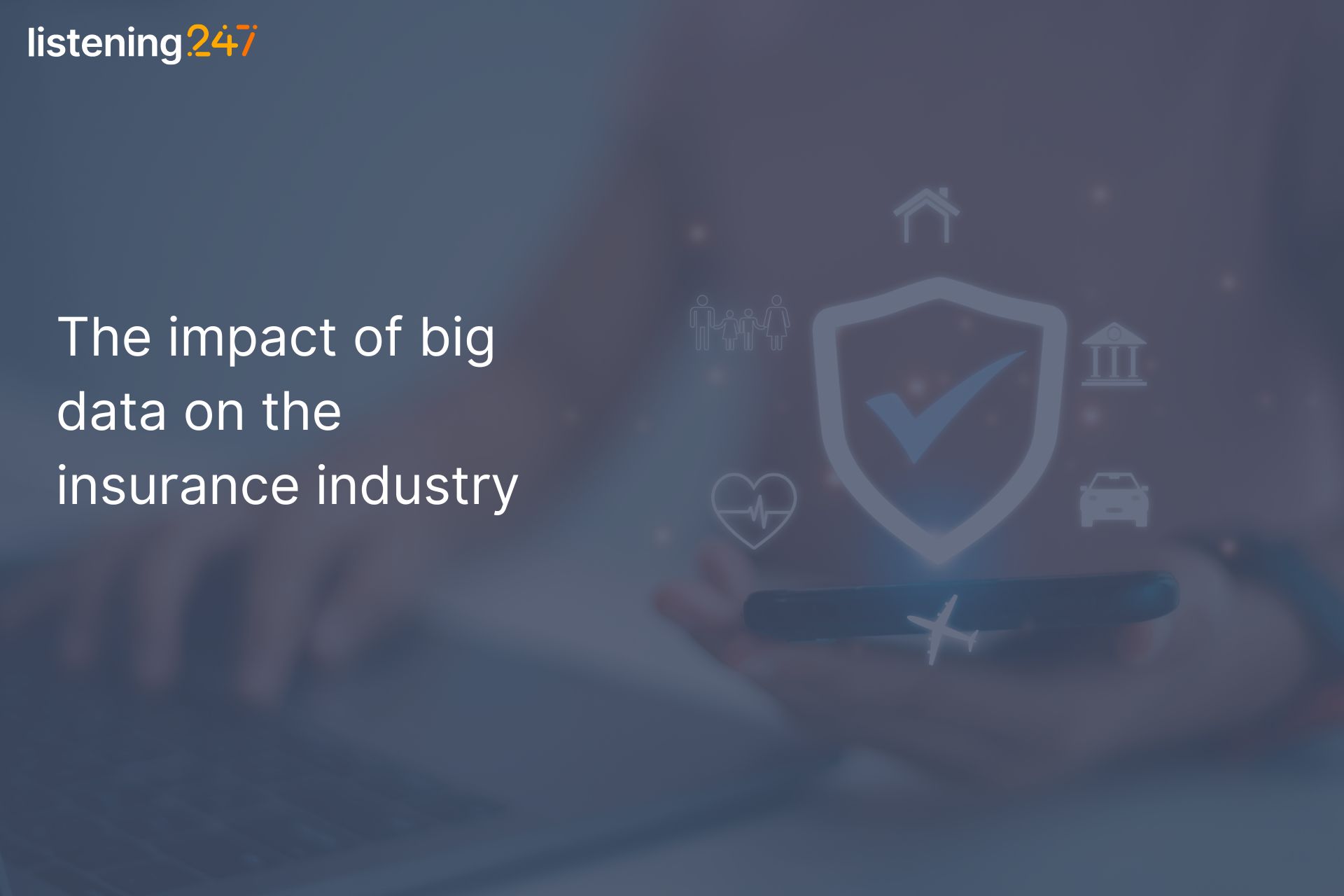
listening247 In the Press
What is the impact big data has on the insurance industry?
The exponential growth of Big Data is set to transform the insurance industry dramatically. According to Statista, global data consumption, which was 79 zettabytes in 2021, is projected to exceed 180 zettabytes by 2025. This surge in data will predominantly consist of unstructured data from various sources, including customer interactions and IoT devices. As insurance companies strive to enhance customer experience management (CXM) through comprehensive data analytics, they must adapt to manage and leverage this influx of information effectively. The integration of advanced technologies, such as edge computing and AI, will be crucial in handling the massive data volumes and improving forecasting accuracy, ultimately reshaping the industry's landscape. Our CEO, Michalis. A. Michael gives us a better understanding from his interview.
By what percentage is Big Data expected to grow in the next few years – and what will that mean in terms of data gravity for the insurance industry?
Globally, data consumption is expected to surge from 79 zettabytes in 2021 to over 180 zettabytes by 2025, with storage capacity growing at a 19.2% annual rate. Much of this data will be unstructured, stemming from customer interactions and IoT devices. This expansion offers a significant opportunity to enhance customer experience management (CXM) by incorporating comprehensive analytics across various communication channels and languages. Advanced AI can process and interpret this data, providing actionable insights regardless of language barriers.
What are the main elements driving the increase in Big Data in the insurance industry – and why?
IoT data – for example from wearable devices which measure biometrics or smart car devices that measure driving behaviour – will become standard for the insurance industry since they promote forecasting accuracy and competitiveness which is articulated in a given customer’s insurance premium.
Will an increase in Big Data negatively or positively affect the insurance industry?
The impact will be largely positive due to improved forecasting models. The data available currently and in the future is an actuary’s dream.
How can companies effectively aggregate their data to maximum effect? Which technologies are proving most effective in terms of handling the data surge? Is edge computing the answer, for example?
Rapid changes in data processing are anticipated in the coming years to handle the growing volume of data. According to Gartner, while only 10% of enterprise-generated data is processed outside traditional data centers or cloud environments today, this figure is expected to rise to 75% by 2025. This shift highlights that current cloud solutions will struggle with the vast amounts of data generated by IoT devices and other sources at the network edge.
Data centers alone will not be able to meet the demands for faster response times and higher transfer rates, leading to significant challenges for many applications. The solution lies in decentralization through edge computing, which brings data processing closer to the source. This approach will be crucial in managing the massive data consumption and ensuring efficient data handling and analysis.
With the implementation of smart cities, are these increased amounts of data collection something we should be cautious about in terms of privacy for individuals and security, given the rising number of cyber-attacks and breaches?
Data privacy increasingly focuses on obtaining individual consent for personal data usage, and organizations are becoming more aware of information security. This heightened awareness extends to longer sales cycles for CXM programs due to stringent security protocols. Adhering to global standards like ISO27001 and ISO27002 and undergoing independent penetration tests helps identify and address vulnerabilities, thereby mitigating risks of data breaches.
How do you see the future of Big Data developing in the insurtech space?
The most significant shift is driven by AI's growing capability to accurately annotate and analyze unstructured data, which comprises over 95% of all data ever recorded. Unlike structured data, unstructured data includes text, audio, images, and video. This development has profoundly impacted customer experience management (CXM), enabling companies to access and understand every customer interaction, regardless of language, and effectively design and implement tailored customer service workflows and scripts.
Conclusion
As Big Data continues to proliferate, the insurance industry stands to benefit significantly from improved forecasting models and enhanced CXM capabilities. The rise of IoT data and unstructured information presents both challenges and opportunities, driving the need for innovative data processing technologies like edge computing. While the increasing volume of data raises concerns about privacy and security, adherence to global standards and rigorous security protocols can mitigate these risks. The future of Big Data in insurtech is poised for transformative change, with AI-driven analytics enabling insurers to gain deeper insights into customer interactions and refine their services accordingly.
Origal Source: Global Banking & Finance Review
